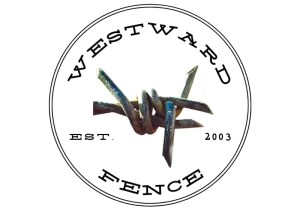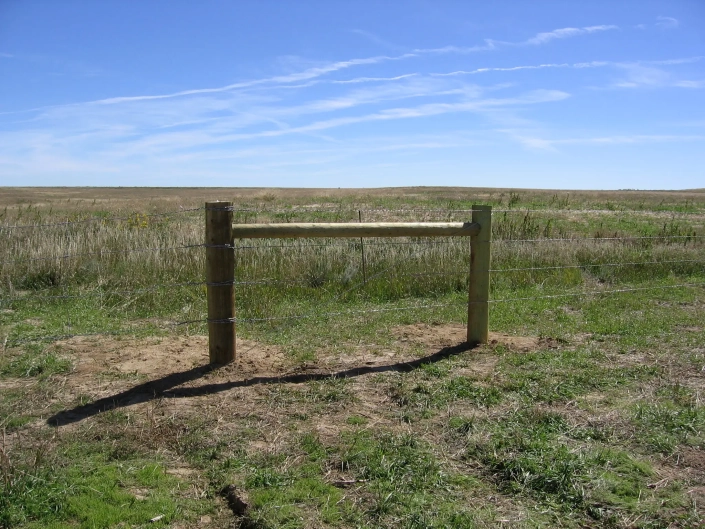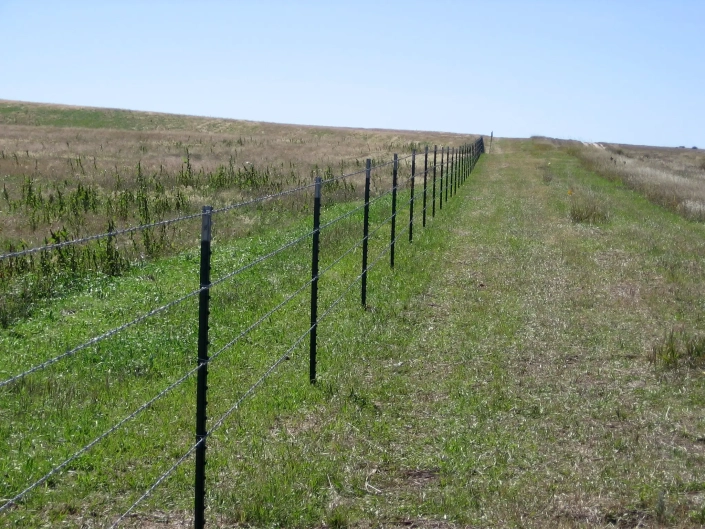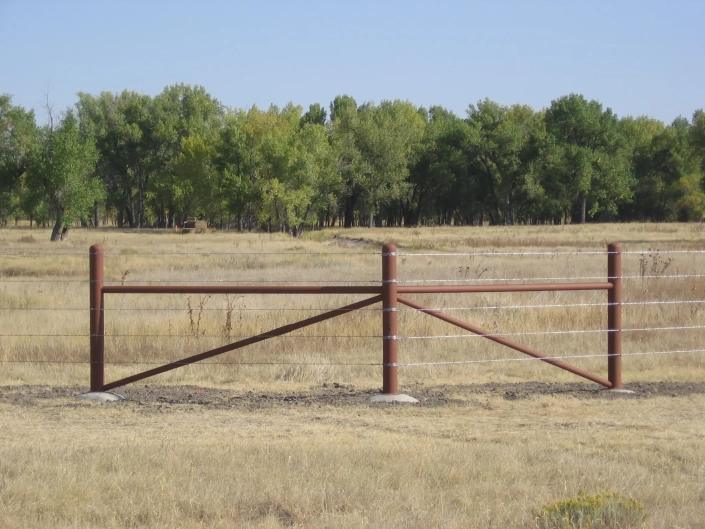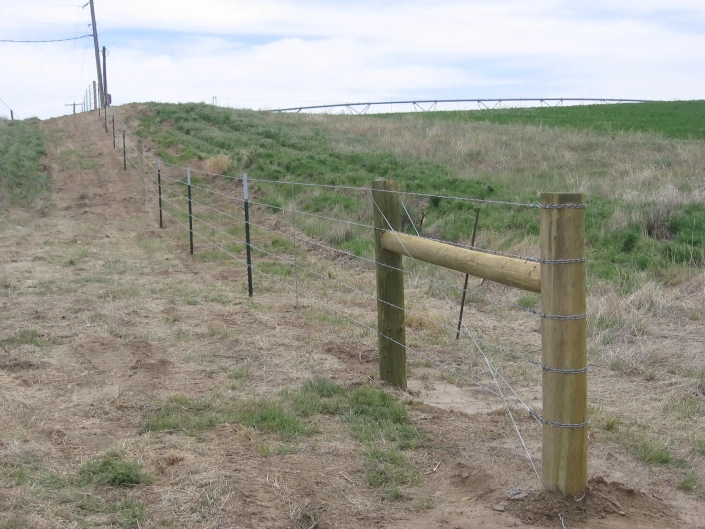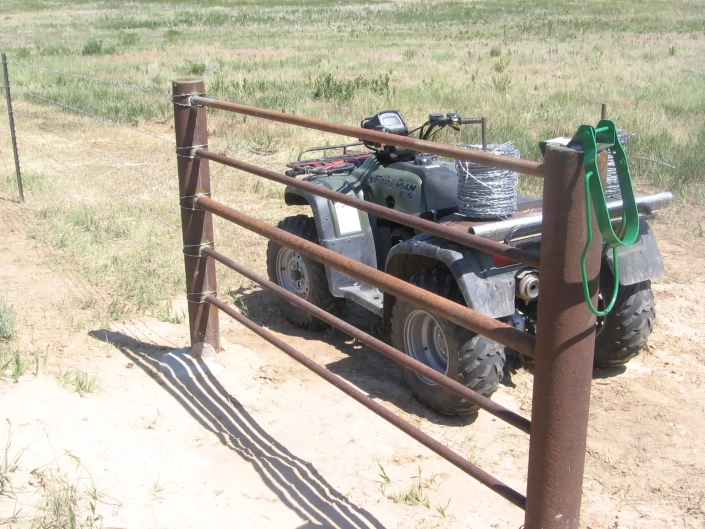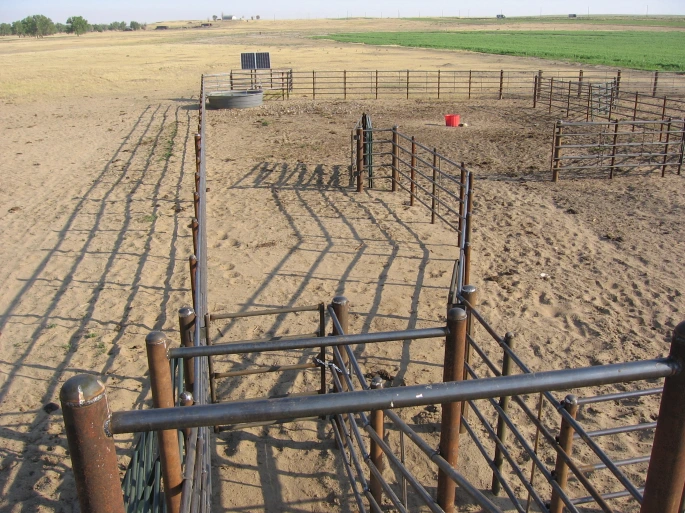AGRICULTURAL FENCES
Westward Fence is distinguished by its professional expertise in the installation of split rail, vinyl, barbed wire, and high tensile wire perimeter fences, specifically tailored for large estates and ranch properties. The company’s skilled team designs and implements secure, functional fencing solutions to effectively contain crops, pets, livestock, and horses, while preserving the visual harmony of expansive landscapes. Westward Fence emphasizes durability and safety in every project, ensuring that each installation meets the rigorous standards required by agricultural clients, equestrian facilities, and rural homeowners seeking dependable containment and clear property delineation.
What types of agricultural fencing do you install?
We install a variety of fence types including split rail, vinyl, barbed wire, field fence, wire mesh and high tensile wire fences. Each type is selected based on terrain, livestock type, aesthetics, and durability requirements.
How do I know which fencing material is best for my property?
The best fencing material depends on several factors: the type of animals (livestock, horses, etc.), whether you need visibility, aesthetics, or maximum containment, the local weather and climate, and how much maintenance you’re willing to do. We can help assess your needs and recommend what’s right.
What is high tensile wire fence and why should I consider it?
High tensile wire fencing uses strong, stretch-resistant wire that can stay tight and secure over long runs with fewer posts. It’s great for large pastures where you need strong containment but want to minimize materials and maintenance.
Do you offer custom fence designs for large estates and ranches?
Yes. For large estates, ranches, or unique terrain, we design custom fencing solutions that meet both functional requirements (livestock, crops, safety) and aesthetic goals.
How long does an agricultural fencing project usually take?
Timelines vary depending on the size of the job, the type of fencing, accessibility of terrain, and any permitting or site prep needed. Smaller projects (a few hundred feet) might take a day or two. Larger ranch-scale boundary fences can take several days to weeks. We’ll provide you a schedule estimate when we assess your project.
What is involved in site preparation?
Site prep can include clearing vegetation, leveling ground, removing rocks or debris, and ensuring good drainage. For steeper or rockier terrain, extra time and equipment may be needed.
What maintenance is required for agricultural or rural fences?
Maintenance depends on the fencing material. For example:
- Barbed wire may need tightening, replacing of broken strands or stays adjusted.
- Wood rails and posts will need periodic inspection for rot or damage, and possibly may require staining to extend the life.
- Vinyl is low maintenance but needs occasional cleaning and checking for impacts or UV damage.
- Gates and hardware should be checked for alignment and tightened.
How weather and climate affect fence lifespan?
Exposures to sun, moisture, snow, frost, and even animals chewing/leaning can affect fences. Materials like treated wood or durable vinyl resist weathering; proper drainage, good footings, and protecting wood from ground contact also help. We build with these factors in mind.
Do you provide fencing for just livestock, or also for crops / property delineation / aesthetic purposes?
We cover a wide range: livestock containment, horse paddocks, crop protection, boundary delineation, and fences that both serve functional roles and add to your land’s aesthetic value.
What are your warranties or guarantees?
Our fences are built with quality craftsmanship and durable materials. We guarantee that installations meet relevant safety and durability standards.
What are the cost factors for agricultural fencing?
Key cost drivers include type of materials, fence length, terrain difficulty, bracing style, gate and hardware components, and any site preparation needed. We’ll give you an itemized estimate so you see where the costs come from.
Do I need a permit or any legal requirement for putting up fences?
That depends on your location. Some counties / rural areas have regulations about fence height, visibility for road safety, or whether boundaries are marked. We can help you understand if any local codes or permits may apply.
How do you ensure safety for livestock and wildlife?
Proper spacing, top‐rail design (if used), visible fencing, avoiding sharp or protruding hardware, and selecting materials that are safe. Also ensuring gates are secure. Fence placement and design can consider wildlife movement corridors where relevant.
What lead time should I expect before work begins?
Depending on our schedule, material lead times, and your property’s readiness, there might be a waiting period. We’ll walk you through what to prepare so when we do begin, things go smoothly.
